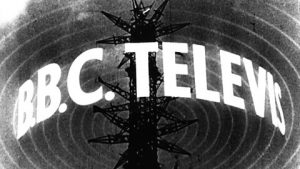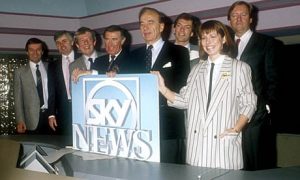Today, information travels around the world at a breakneck speed. Digital technology, wireless connectivity, and text messaging are here to stay. When newspapers were the only source of news, competition was less fierce.
Within the past few decades, news production has changed faster than any large-scale industry. New technology has dramatically altered the collection, assembly and dissemination of news.
Easy access to a wide range of sources through mobile phones, email and social media has made greater collaboration possible. Meeting deadlines is crucial in the hard-nosed business of modern news production.
So, how much have the effects of new technology radically influenced the audience’s preference for certain kinds of news story? How much has it been further influenced with other social changes? And have these developments brought about more fundamental changes to our currently accepted news values?
Contents
Film
The arrival of cinema newsreels in 1910 brought moving pictures of important news events to the public. The first silent British newsreel on the scene was Pathe’s Animated Gazette.

Newsreels began to switch to sound in 1929 with the first appearance of British Movietone News. However, this did little to change the unhurried deadlines adopted in the national newspapers. The approach to news reporting was to avoid controversy and maintain the status quo.
Cine magazines, such as British Movietone News and Pathe Pictorial, were shown in cinemas until 1970. They were produced at a leisurely pace. Each newsreel contained about five top stories which could take up to about a week to prepare. Timeliness was not a priority. There was time to write carefully crafted, accurate scripts.
Radio
The arrival of radio, and then television, hastened the pace of news gathering. In the United Kingdom, the BBC, founded in 1922, began to broadcast sound. The new medium of radio had the potential to transmit news quicker and more frequently than the daily newspaper.

During World War II, a growing number of people relied on their ‘’wireless’’, rather than their daily paper, for regular updates on the progress of the war.
Before long, radio news bulletins began to include interviews and ‘’actuality’’. Sound bites and background noise were recorded live and inserted into a report. This enabled listeners to hear events for themselves and added authenticity to the reporter’s words.
The BBC launched Radio 1 and Radio 2 in 1967. The first three local radio stations opened in the same year. Leicester, Sheffield and Merseyside began broadcasting that November. This opened the way for news bulletins on the hour, every hour. It was now possible to give regular updates on world, national, regional and local news events.
News values and the medium of radio
This new-found immediacy and the use of actuality began to influence the news values for radio news. For instance, stories which contain dramatic actuality have greater news value than those which don’t.
Drama had become an overriding news value in radio. But, a dramatic radio lead story may not necessarily make the front page of a newspaper. The sounds of radio news and the written words of the newspaper will have different news values.
For instance, radio can convey the feeling of an angry exchange between two politicians much better than a newspaper can.
Television
Television can transmit moving pictures of news events directly into viewers’ homes. The pictures enable viewers to observe the story for themselves. Thus good pictures are essential for television news.
Television differs from radio and the press. It has other considerations when selecting news stories. For instance, a story with dramatic or eye-catching pictures is more likely to be chosen than one without.
The rise of television
After the second World War, the BBC resumed its television broadcasts from Alexandra Palace in 1946. The new medium soon became increasingly popular.

transmitted from Alexandra Palace
At first, television adopted a similar format from the cinemas. The newsreader voiced his commentary out-of-vision over film. But soon news bulletins, in which the newsreader appeared in vision to introduce film and interviews, replaced this.
Later, the BBC introduced the “news flash” – a brief announcement interrupting programme schedules to break news of an important event. Thus, they could further reduce the time gap between a news broadcast and the event itself.
Rolling news
The next logical development was rolling news, TV channels began broadcasting news 24 hours a day. Cable News Network (CNN) were the first to introduce this to the United States in 1980.

Nine years later Sky News soon gained a reputation for timeliness and innovation. It started broadcasting a 24-hour news service via satellite in the UK and around Europe. It now broadcasts worldwide.
The BBC became the first competitor to Sky News. It launched BBC News 24 (now the BBC News Channel) in 1997. This was part of its strategy to develop digital domestic television channels.
In the past, programme interruptions were restricted to extremely urgent news. Such breaks are now commonplace on 24-hour news channels. The term ‘’breaking news’’ has come to replace the older term ‘’news flash’’.
Breaking news
Breaking news is newly received information about an event that is currently occurring or has taken place very recently. Such events may include a plane crash, a building on fire or a shooting.
Breaking news stories may make dramatic and compelling copy. However, in the disruption that ensues, they are typically the most chaotic and confusing to cover.
Increasingly TV and radio journalists are reporting the here and now. There is less time and opportunity to give background information. Thus, reporters resort to describing an unfolding event in much the same way as a commentator reports a sports match.
Evidence from panicked bystanders is not always reliable. Good news reporting depends on checking the reliability of eyewitness accounts with authorities, such as the police or fire brigades.
With a growing number of channels competing for similar audiences, timeliness is crucial in today’s television news production. All too often, there is fierce competition to get a scoop, and the first casualty is accuracy.
TV interviews
Have you have been asked to take part in an interview? Take a look at my advice for handling radio and television interviews.
Information Technology
Advances in information technology have revolutionised news broadcasting. They have made possible a level of timeliness unimagined only a few decades ago. Consumers can choose more of the news they want and get information faster.

The public can email their opinions and indicate which news stories interest them most. They can text information or send pictures and video clips of events direct to a newsroom on their mobile phones.
Often citizen journalists are already at the scene of an event. So they can report news stories long before professional journalists and camera operators get there.
However, the race for tighter deadlines has its problems too. The growing number of hastily gathered contributions may contradict one another. This further increases the risk of error.
The insatiable appetite for immediacy means that many of today’s news stories may lack sufficient background material. This is because there is too little time to gather the full explanation lying behind an event.
Before the arrival of radio and television news, newspaper journalists had twenty-four hours to pull together a story thoughtfully and carefully. However, in today’s mad scramble to get the story first, journalists may cut corners. In their haste, they can justify this by adopting cynical slogans like the dodgy dictum: “Don’t get it right; just write.”
All this has its effect on news values themselves. News organisations must maintain their share in a rapidly evolving market. So, as they do so, they may search out alternative news values that will attract and maintain their audience.
Social Media
The growth of social media is fast changing the traditional distinction between news producers and their passive audience. Today anyone can contribute evidence crucial to a story which the official media may have missed.

Social media are two-way streets. Users can access a variety of sources from which they can gather news and information. They also have a platform from which they can publish their own news stories directly to big audiences.
This means they can bypass the large news organisations altogether. No longer is access to news restricted to information selected by a journalistic elite in one of the big institutions. People are free to decide for themselves what makes a story newsworthy.
In future this may lead to a radical re-understanding of the role of the news industry. Social media have already led to a re-defining of news values. For instance, journalists will often select stories simply because they have gone viral on Twitter or Facebook.
How reliable is this ‘new’ journalism?
A story may be interesting but not necessarily accurate. News values explain why a story will attract attention, but it takes rigorous fact-checking to test its veracity.
Because many citizen journalists lack a comprehensive training, they may have insufficient skills to check out a story thoroughly. Citizen journalism may be unreliable.
Recent studies have shown that misinformation spreads much faster than genuine news. People who spread fake news may do so because of its novelty. They may gain status by sharing new information. Novel information attracts more attention than information people already know.
Misinformation in the traditional media can spread even faster when reporters post erroneous updates on Twitter or other social media.
Moreover, the manipulation of social media and the growth of “fake news” have been on the increase recently. This means journalists and the public alike must be alert and quick to spot “made-up” stories. Authors of fake news may sensationalise their stories simply to whet the public appetite and get more attention.
